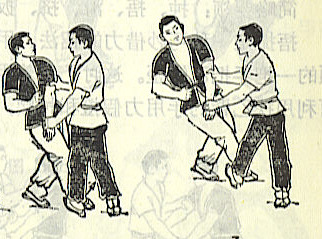When your opponent control your leading leg and back arm at the same time, if he moves your leading leg across your body, and also moves your back arm across your body, your body will be put in a situation that you "can't change".
In the normal fighting situation, it's easy to sweep your opponent's leading leg. But it's difficult to control his back arm. Most of the time you will
- push your opponent's leading arm,
- throw a fake punch. This will force your opponent to block with his back arm.
- You can then obtain control on his back arm.
What do you think about this strategy? Your thought?

In the normal fighting situation, it's easy to sweep your opponent's leading leg. But it's difficult to control his back arm. Most of the time you will
- push your opponent's leading arm,
- throw a fake punch. This will force your opponent to block with his back arm.
- You can then obtain control on his back arm.
What do you think about this strategy? Your thought?

